The Joy of Proggy: Soft, Shaggy, and Seriously Satisfying!
If you’re looking for a craft that’s simple to pick up, wonderfully meditative, and results in beautifully tactile creations, then proggy (or shaggy) rag rugging could be your new favourite pastime. This traditional British technique involves pulling or pushing small fabric pieces through a hessian (burlap) backing to create a soft, fluffy texture.
Proggy rag rug making is incredibly forgiving and beginner-friendly. It's ideal for anyone who loves hands-on making but doesn’t strive for perfection.
Below, you’ll find our top tips and resources to get you started, but if you’d prefer to learn in person, don’t miss our British Rag Rug Techniques for Beginners Classes - the perfect way to see the proggy method in action and try it for yourself.
What is Proggy Rag Rugging?
Proggy rag rugging (sometimes called shaggy, proddy, clippy, clootie or peggy) is one of the most tactile and traditional forms of rag rug making. The technique has many different names depending on where you are in the UK - each region developed its own term over time - but they all describe the same wonderfully textured, tufted style of rag rugging that’s soft underfoot and bursting with character.
Rather than pulling loops through the backing as you do in rug hooking, in proggy rag rugging you pull or push small pieces of fabric through a hessian (burlap) backing so that the ends stick up to form a lush, shaggy pile. Each little “proggy” of fabric is worked by hand, building up a surface that’s thick, cosy, and delightfully touchable.
Because it’s such a forgiving and repetitive technique, proggy rug making is easy to learn and deeply relaxing to do - no need for precision. It’s perfect for beginners and seasoned crafters alike, and a brilliant way to use up old clothing and fabric scraps to create something both sustainable and beautiful.
Over time, these traditional proggy rugs have evolved from humble hearth rugs made from worn-out garments into creative art pieces, cushions, and wall hangings that celebrate colour, texture, and craftsmanship.
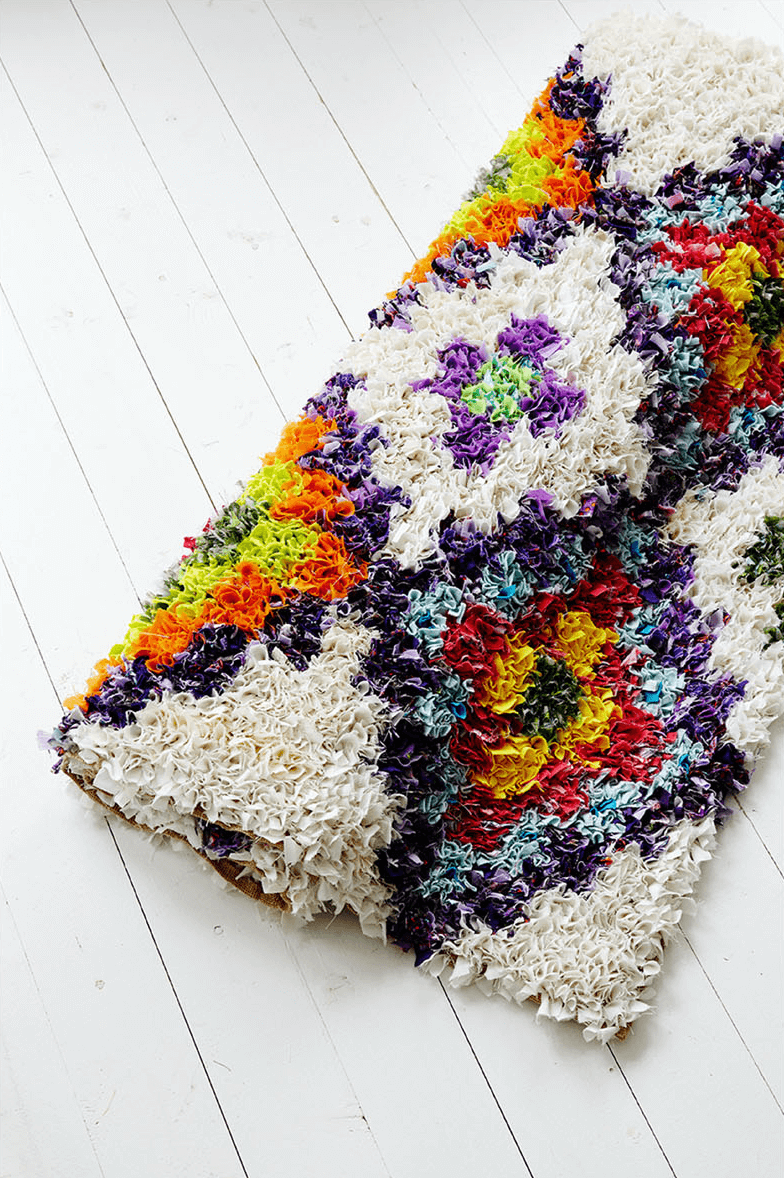
What Tools Do I Need to Make a Proggy Rug?
One of the best things about proggy rag rugging is how simple it is to get started. You only need a handful of basic tools:
- Rag Rug Spring Tool - This is the main tool used for the proggy technique. With this rag rug tool you don’t need a frame to hold your backing taut - it’s comfortable to use on your lap or table, wherever you like to craft.
- Cutting Gauge - This handy tool helps you cut consistent-sized fabric pieces for your rug. Simply wrap your fabric around the gauge, snip along the groove, and voilà - perfectly sized “proggies” every time.
- Base Material - Most proggy mat makers use hessian (burlap) as their backing fabric. It’s strong enough to hold the fabric pieces securely but soft enough to work by hand. We sell pre-hemmed hessian in various sizes to make it easy to start your first project here.
- Fabric Scissors / Rotary Cutter & Mat - we like to cut fabric strips by cutting through lots of layers at once, using super sharp Rag Rug Scissors. See them in action here.
- Fabric / Old Clothing – This is what you use to create your design. Old clothes, t-shirts, wool, or even fleece all work brilliantly (see below for more details).
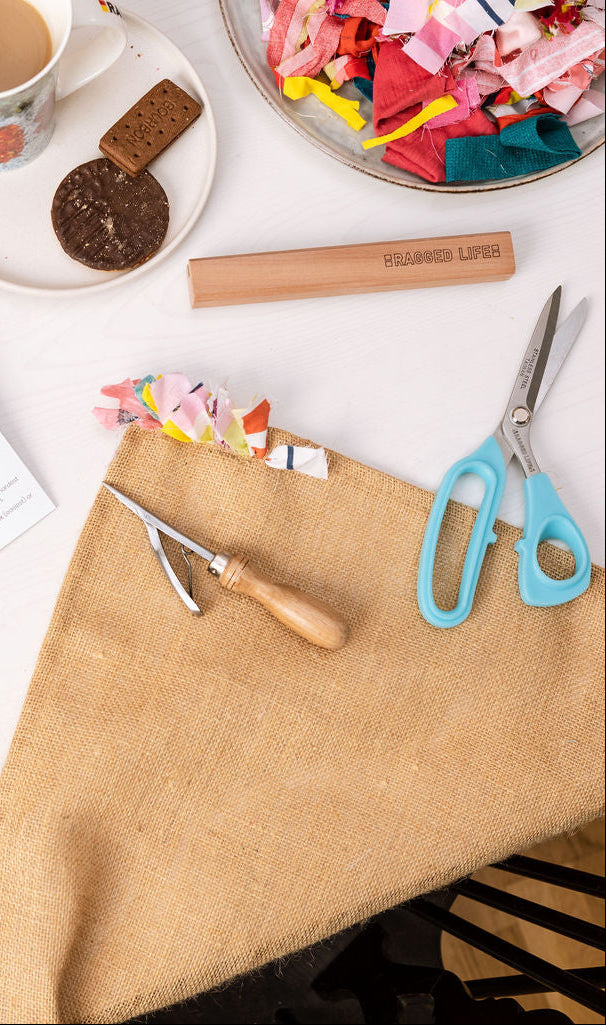
Rag Rug Spring Tool
Anyone who has used a rag rug spring tool never looks back. It's by far the easiest way to make a traditional shaggy rag rug and we've never met a single person who doesn't get on well with it.
With this tool, fabric pieces are pulled across the front of the hessian. This means that, unlike other tools, you don't need a rug frame to hold your hessian tight and you can see exactly how your rag rugging looks as you do it.
Our Ragged Life Spring Tool is based on an original Victorian design and features a slim, pointed end which doesn't disturb the weave of the backing. The elegant wooden handle is smooth and ergonomic to work with.
After many many rugs, your spring may wear out, but there's no need to buy a whole new spring tool, we sell replacement springs, so your investment can last you a lifetime.
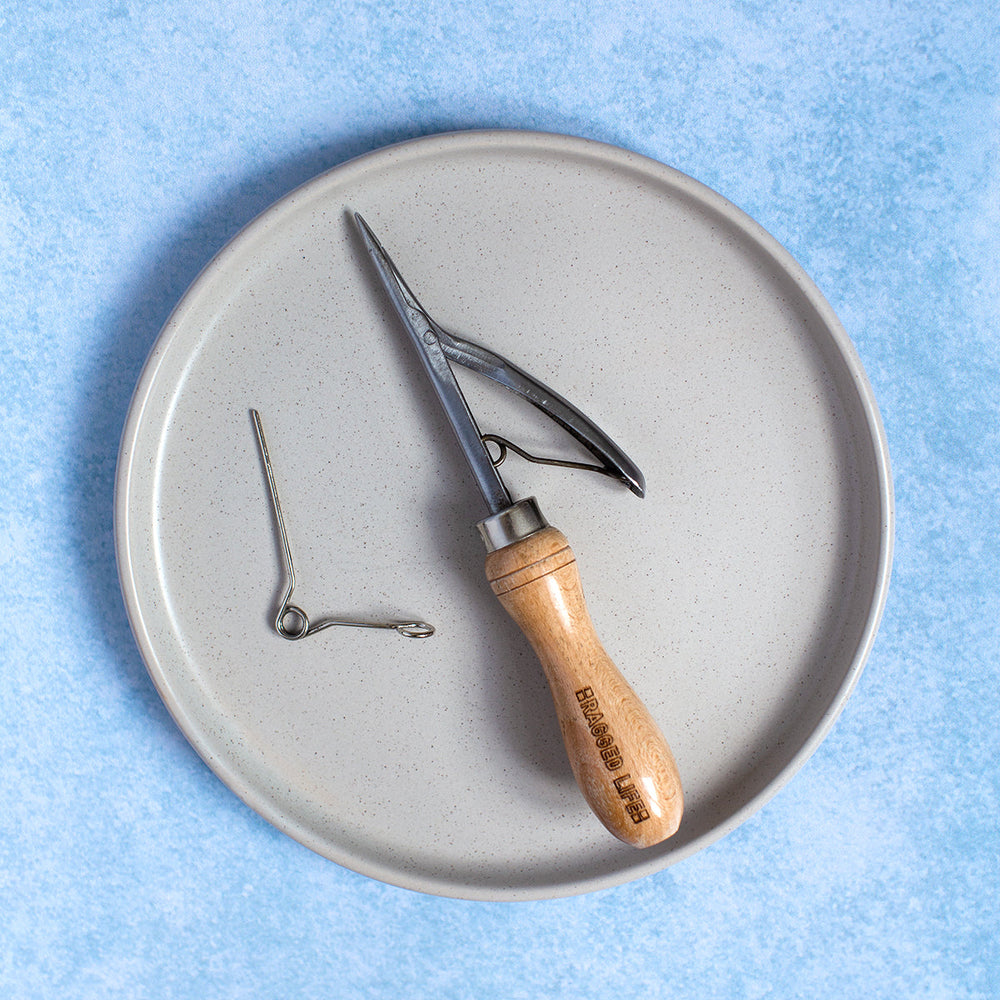
Rag Rug Cutting Gauge
Cutting gauges are simple in design, but big in time- and effort-saving! Simply wrap multiple long strips of fabric around the gauge, cut down the groove and voila - evenly cut, approx 8cm long strips that are perfect for traditional proggy rug making.
Our Ragged Life cutting gauge has been designed by rag rug experts with years of experience under our belts! It features a deeper, wider groove to protect your scissors. Plus, it features handy engraving on the back to show how wide to cut your strips based on how thick or thin the fabric is. Simple, but effective - this truly is an essential bit of kit if you want to make a full rug!
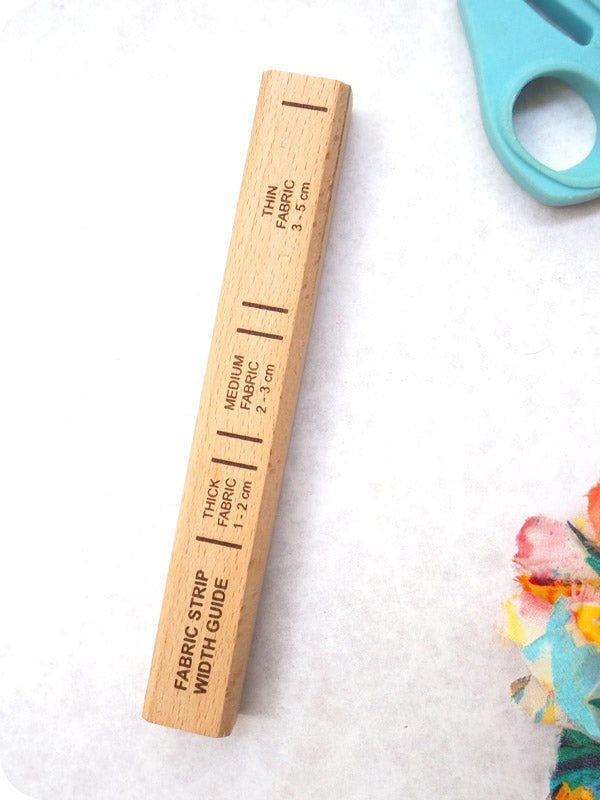
Base Material / Rug Backing
Backing Fabric is the foundation of your rag rug! It’s the surface you pull your short pieces of fabric through to build up your design, so it needs to be strong, but supple.
The most commonly used backing materials are hessian (burlap), rug linen, and specialist rug warp. Hessian is a great budget-friendly and sturdy option for beginners and is what we prefer to use here at Ragged Life as it's the most traditional. Rug linen offers a finer weave that's ideal for very detailed work, but is harder to get hold of in the UK.
The ethos of rag rug making is to use up what you've got, so if you happen to have an old coffee sack at home, which you'd love to work with then give it a go! Just remember, the weave needs to be tight enough to hold your fabric pieces securely, but not so tight that it’s a struggle to pull your fabric through. We sell hessian that is approx 10 holes per inch, which seems to be the sweet spot.
Looking for an easy first project? Read on below or browse our pre-hemmed hessian with pre-printed designs, which are ideal when you're starting out. Think paint-by-numbers but with old clothing!
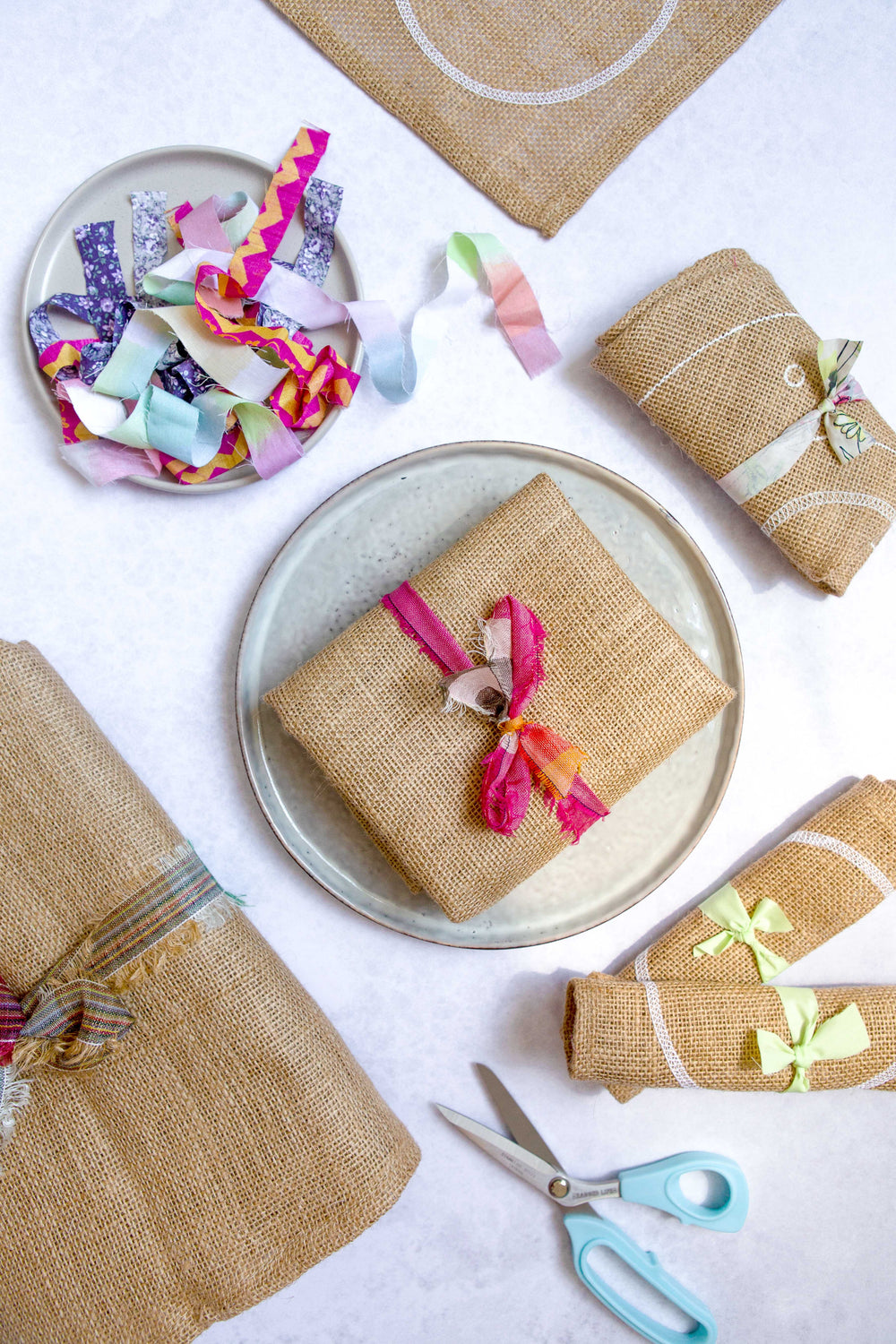
Fabric / Old Clothing
When it comes to fabric to make a rag rug, anything is fair game as long as it can be cut into strips and pulled through the rug backing. Unlike some crafts where blending lots of different materials together into one project makes things look messy, proggy rag rugs are all about texture, so variety adds interest to a design.
You can use strips of anything for decorative projects such as wreaths, garlands and wall hangings. However, practical projects like rugs, cushions and homeware shouldn't incorporate too many fabrics that ravel and fall apart. You'll be forever vacuuming around your mat! Fabrics that work well are soft and thin, such as jersey, cotton, lycra, and fleece. Difficult fabrics are thick and stiff, such as denim.
Cut long strips approximately 2cm in width (watch how to create fabric strips from clothing here), before cutting them to length using the rag rug cutting gauge. Cut thicker fabrics narrower and thinner fabrics wider to compensate for different thicknesses within the same project.
Tip: If you're looking to spend more time rug rugging and less time cutting strips, take a look at our 100% wool blanket selvedge strips or Ragged Life recycled sari silk ribbon.
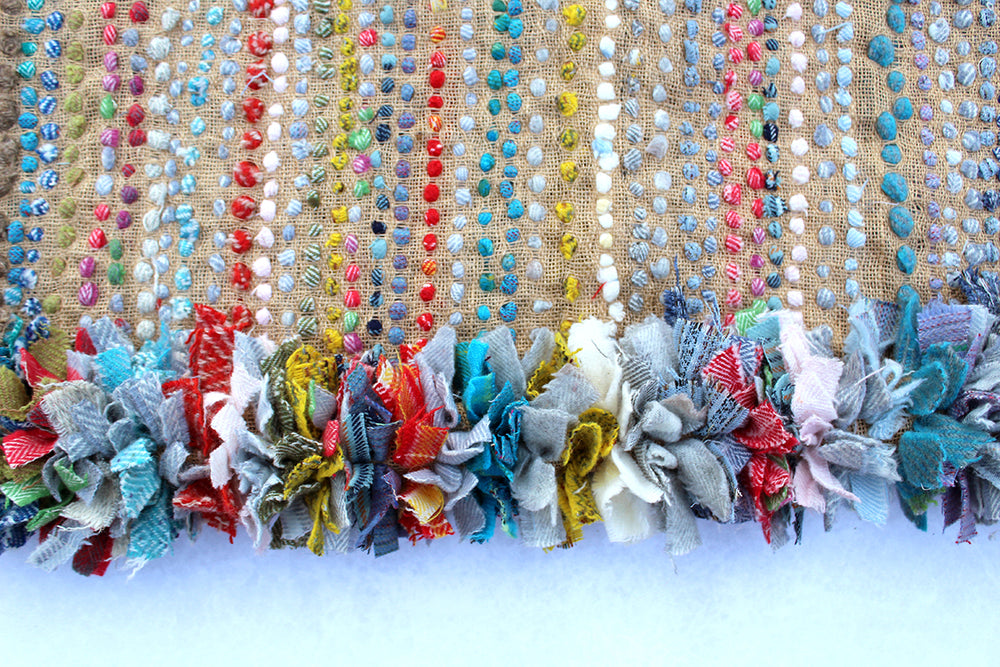

Want to learn how to make a shaggy rag rug? Watch our FREE tutorial videos below...
We've created a free YouTube playlist specifically designed to help beginners learn how to make proggy rag rug projects. Watch the videos below and give us a follow if you like our content. Got any questions? Read our FAQs section below or comment on any of our videos if you're unsure of anything.
How to Make a Proggy Rag Rug
In this short, step-by-step beginner's tutorial video, Elspeth talks through the tools needed to make proggy rag rugs and shows you how to do the technique itself. You'll be amazed by how easy it is!
How to Use a Rag Rug Cutting Gauge
And here you can learn in more detail how to use a rag rug cutting gauge, with all our tips and tricks.
Top Tips for Beginners
1) Use soft, pliable fabrics for your first project as these are easiest to rag rug with. Jersey from old t-shirts is ideal.
2) Both the front and back of the fabric will show, so be sure to take that into account if the wrong side of your fabric looks considerably different to the right side.
3) If at any point you are struggling to pull a fabric strip through the rug backing, you have probably cut it too wide. Cut a test strip of a fabric and pull it through the hessian to preempt any issues if you're unsure of how wide to cut your strip.
4) Fill shapes in from the outside inwards. This means that if you run out of one particular colour, your design stays symmetrical and the colour change looks deliberate.
5) Avoid fabrics that shed a lot, especially when making practical projects like rugs and cushions. A little bit of fraying is fine, but some fabric never stop moulting. We don't like to work with thick upholstery materials.
6) Don't get too caught up in counting holes. If the hessian has already tightened in an area, it doesn't need more fabric putting in. If it still looks a bit loose then it does need more.
7) Don't buy hessian from the garden centre. It tends to be hairy and dusty. Buy quality hessian - you'll thank your past self!
You can browse some beginner FAQs on the blog here.
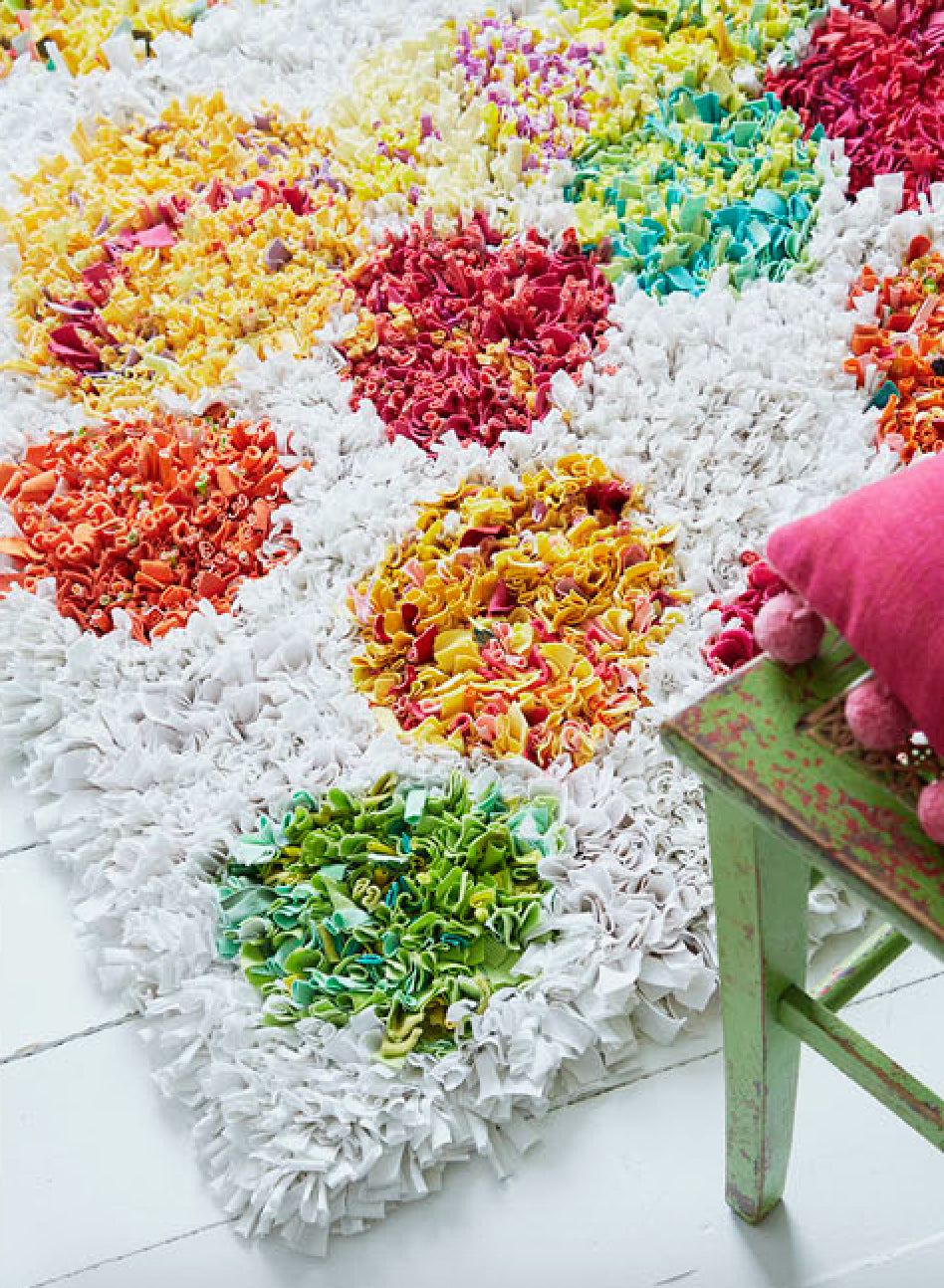
Project Ideas & Inspiration
We often share out latest makes on the Ragged Life Instagram page or Facebook page, so those are great resources to see what rag rug projects students have made in the past.
For detailed instructions and pretty projects, we also have beginner projects in our first book "Rag Rugs, Pillows & More".
Great beginner projects include: rugs, cushions, draft excluders, garlands and wreaths.
Harder proggy projects are ones that require assembly at the end, such as Christmas stockings, basic upholstering, pouffes etc...
Below are some shaggy rag rug projects made by the Ragged Life team (top row) and students (bottom two rows) to provide some inspiration.
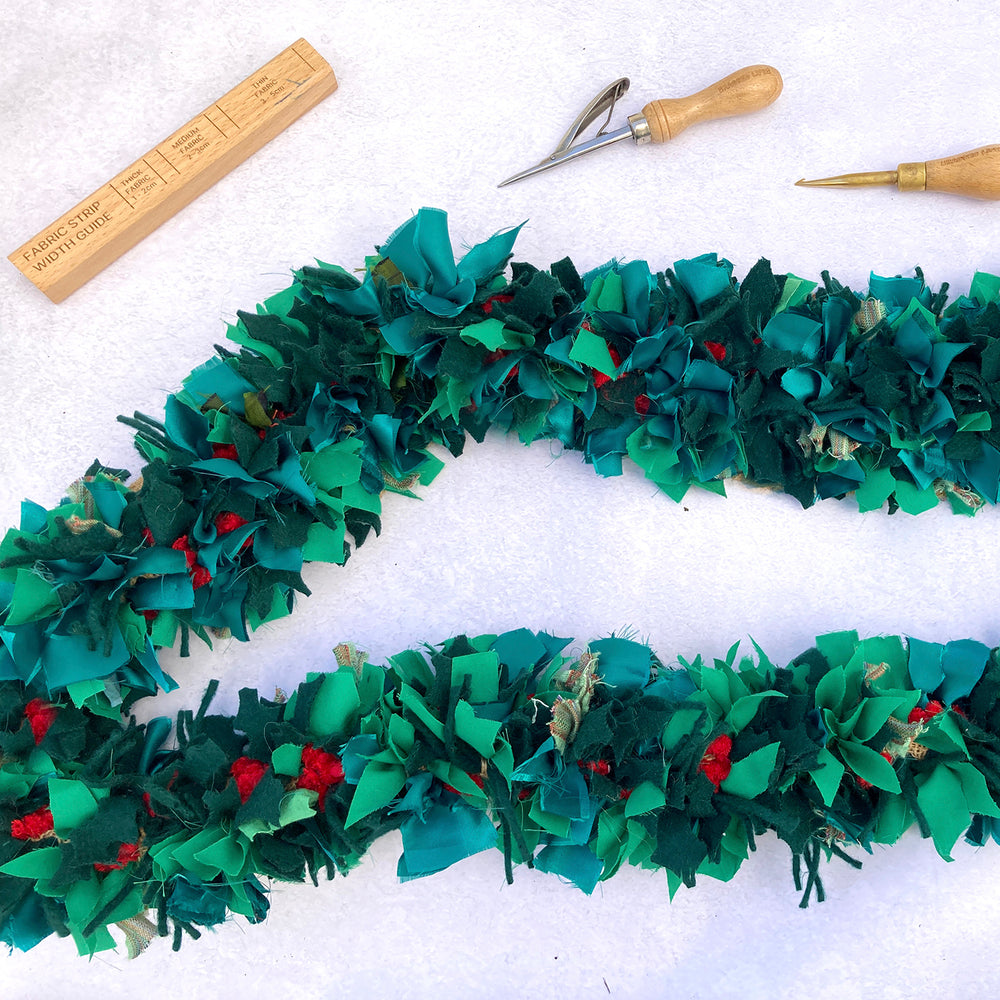
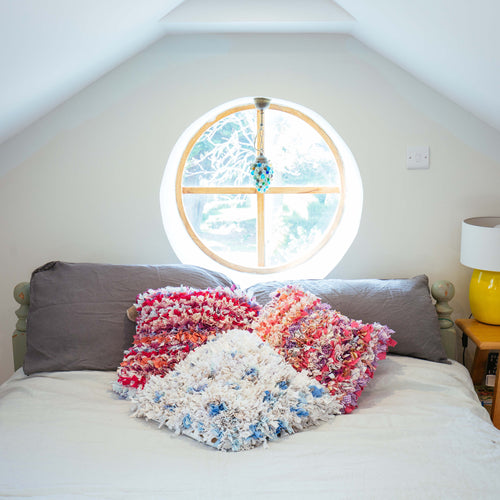

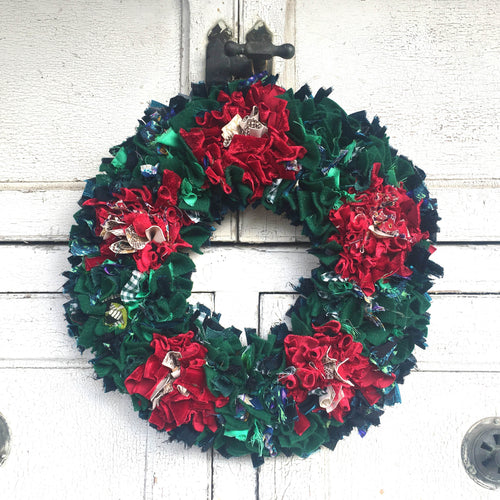
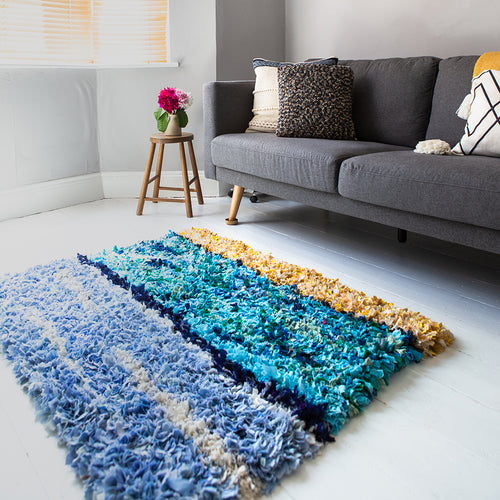
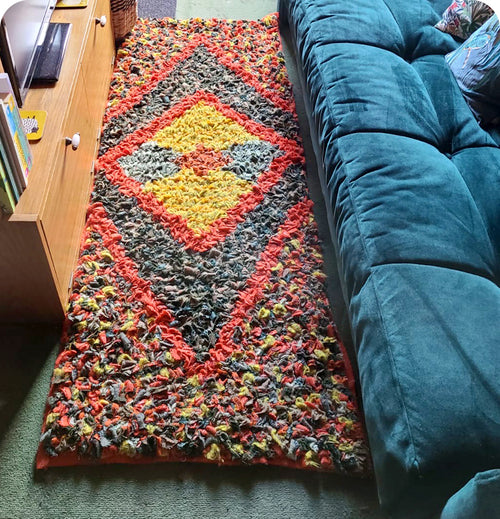
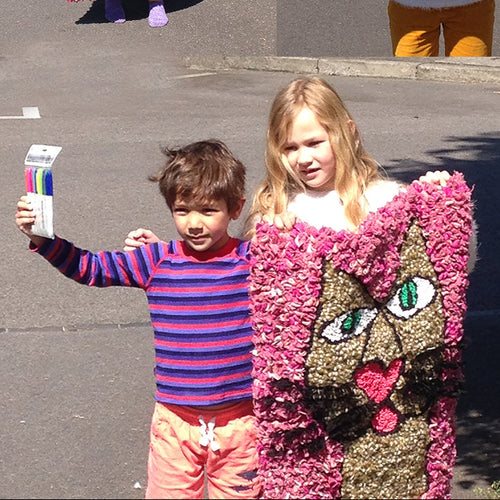
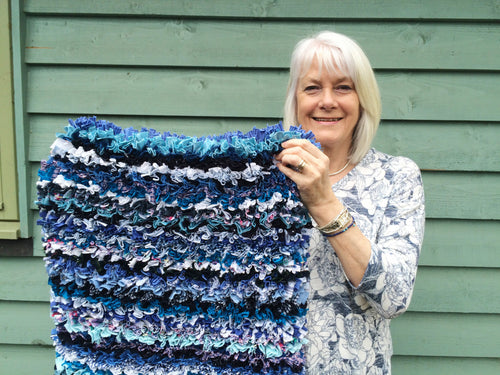
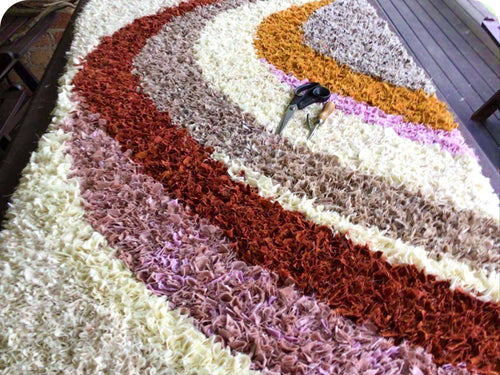
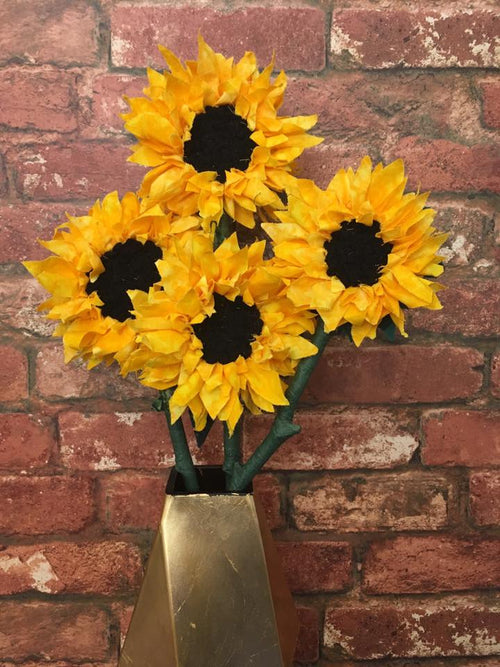
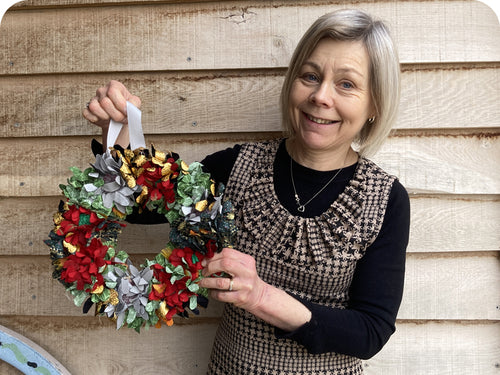
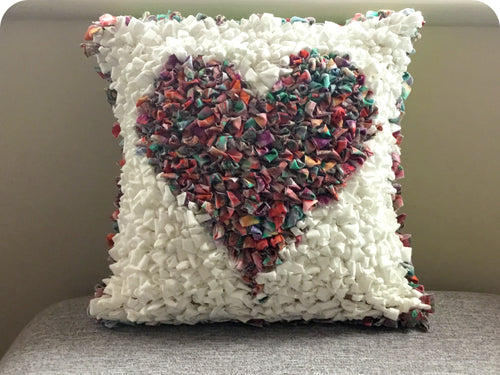
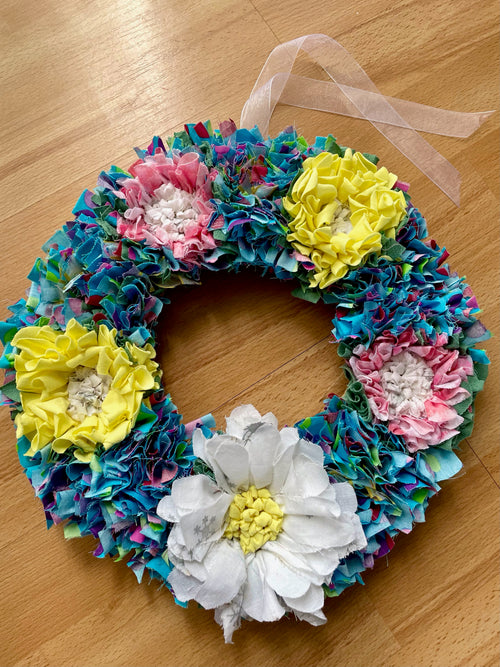

Looking for convenience?
Browse our range of pre-assembled projects for beginner-friendly makes without the agro of hemming. All these projects come with easy to follow instructions and are the perfect way to start your rag rugging journey with confidence.
Prefer to learn in person?
We teach proggy rag rug making as part of our British Rag Rugging for Beginner classes, which take place in various venues across the country, including Hertfordshire, Brighton, York, London, Bristol, the Lake District, Essex and more. Read more about our most popular rag rug making class below and browse dates by clicking through.
Rag Rug Inspiration Newsletter
Sign up for our monthly rag rug inspiration newsletter below to be the first to find out when new patterns are released, when tutorial videos go live and to build your craft community. You can unsubscribe at any time!




